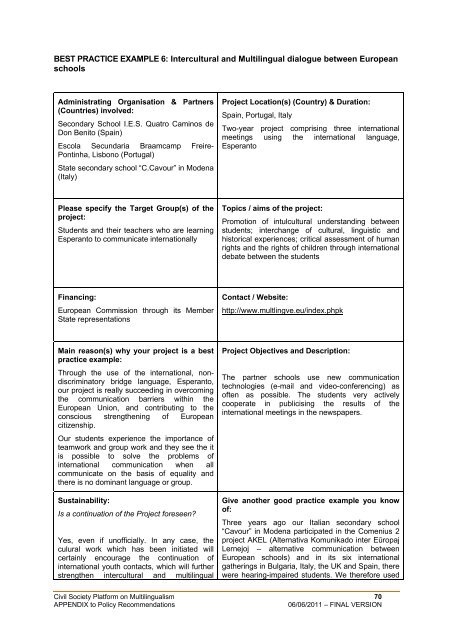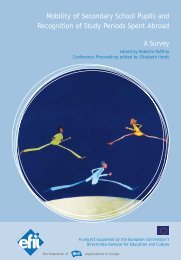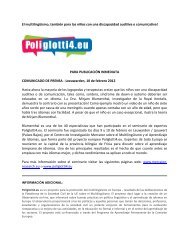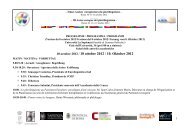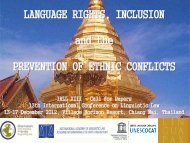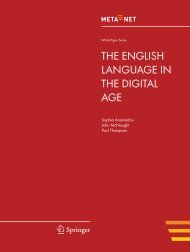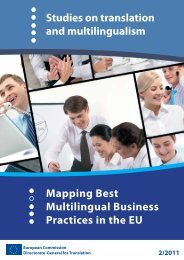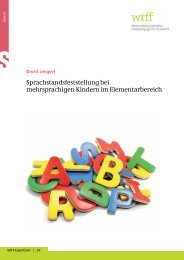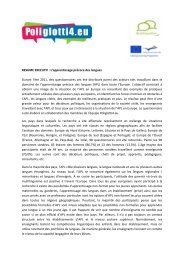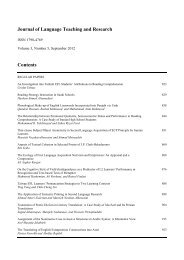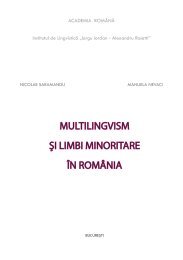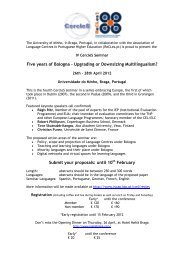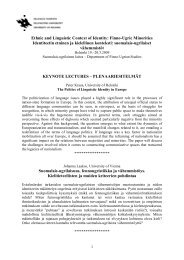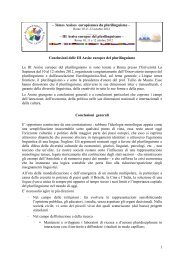FULL VERSION - European Commission - Europa
FULL VERSION - European Commission - Europa
FULL VERSION - European Commission - Europa
Create successful ePaper yourself
Turn your PDF publications into a flip-book with our unique Google optimized e-Paper software.
BEST PRACTICE EXAMPLE 6: Intercultural and Multilingual dialogue between <strong>European</strong>schoolsAdministrating Organisation & Partners(Countries) involved:Secondary School I.E.S. Quatro Caminos deDon Benito (Spain)Escola Secundaria Braamcamp Freire-Pontinha, Lisbono (Portugal)State secondary school “C.Cavour” in Modena(Italy)Project Location(s) (Country) & Duration:Spain, Portugal, ItalyTwo-year project comprising three internationalmeetings using the international language,EsperantoPlease specify the Target Group(s) of theproject:Students and their teachers who are learningEsperanto to communicate internationallyTopics / aims of the project:Promotion of intulcultural understanding betweenstudents; interchange of cultural, linguistic andhistorical experiences; critical assessment of humanrights and the rights of children through internationaldebate between the studentsFinancing:<strong>European</strong> <strong>Commission</strong> through its MemberState representationsContact / Website:http://www.multlingve.eu/index.phpkMain reason(s) why your project is a bestpractice example:Through the use of the international, nondiscriminatorybridge language, Esperanto,our project is really succeeding in overcomingthe communication barriers within the<strong>European</strong> Union, and contributing to theconscious strengthening of <strong>European</strong>citizenship.Our students experience the importance ofteamwork and group work and they see the itis possible to solve the problems ofinternational communication when allcommunicate on the basis of equality andthere is no dominant language or group.Sustainability:Is a continuation of the Project foreseen?Yes, even if unofficially. In any case, theculural work which has been initiated willcertainly encourage the continuation ofinternational youth contacts, which will furtherstrengthen intercultural and multilingualProject Objectives and Description:The partner schools use new communicationtechnologies (e-mail and video-conferencing) asoften as possible. The students very activelycooperate in publicising the results of theinternational meetings in the newspapers.Give another good practice example you knowof:Three years ago our Italian secondary school“Cavour” in Modena participated in the Comenius 2project AKEL (Alternativa Komunikado inter EŭropajLernejoj – alternative communication between<strong>European</strong> schools) and in its six internationalgatherings in Bulgaria, Italy, the UK and Spain, therewere hearing-impaired students. We therefore usedCivil Society Platform on Multilingualism 70APPENDIX to Policy Recommendations06/06/2011 – FINAL <strong>VERSION</strong>


